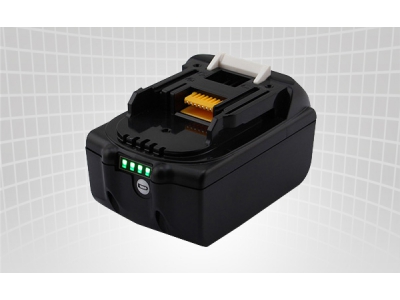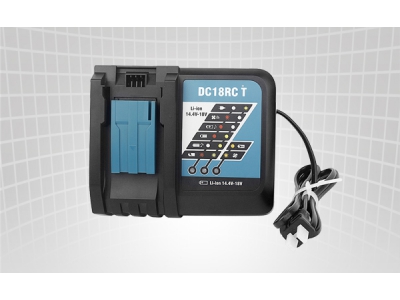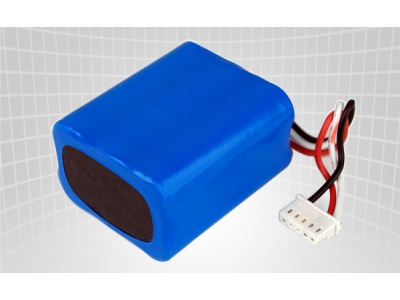Eliminate lithium electricity! Future battery technology: closer and closer
The battery may be the least attractive technology yet. This is especially evident in the department of materials science at the Massachusetts institute of technology there is a dedicated to build and test the next transformative energy storage equipment laboratory, can easily be mistaken for a store.
Narrow in the lab, hair silver grey electrochemical home Donald‘s multidimensional (Donald Sadoway) in rummaging through the plastic components, looks like a child looking for specific lego blocks. He placed two objects on the table, and their size and shape looked like a book town.
No wonder the battery is hard to bring about. But the towns -- batteries -- may be the technology that revolutionizes our energy systems.
Batteries are not just boring. Honestly, they‘re still bad. To be nice, the batteries that help us in our everyday lives are invisible heroes -- they are integrated into smartphones, computers, cars and other important things. They are expensive, bulky, flammable, hard to handle, and prone to failure in cold environments, and prone to corrosive fluids. As the devices that power them become thinner and lighter and smarter, the batteries are still waiting for the next upgrade. It is well known that the performance of computer processors doubles every two years. And batteries may only increase by a few percentage points every two years.
The early prototype of the battery developed by sdov
The future, however, will be the era of battery power. It is imperative. From electric vehicles to industrial solar power plant, the battery will be cleaner and more efficient energy system is the key to the faster - we do this, the faster we can no longer exacerbate climate change.
But our current batteries -- mostly lithium-ion batteries -- are not good enough. Have made some progress in this field: storage cost has fallen by half in the past five years, more and more big companies investing heavily in the technology, such as tesla Gigafactory super battery factory. But the lithium-ion batteries are still too expensive from a broader economic transition point of view. They are quite powerful in our daily equipment, but once they‘re scaled up, they‘re prone to overheating and even explosions.
Perhaps the biggest problem with lithium-ion batteries is their gradual wear and tear. Think of what your phone battery will look like over the course of a couple of years, and it‘s going to go from 1 percent to 1 percent. This process of deep discharge and charging can damage the battery and damage the battery‘s performance.
Therefore, it is high time we usher in a new battery, the researchers around the world are racing to help us achieve this, various technologies are strive to stand out from the crowd. Some of the ideas are novel -- not attractive, but absolutely amazing. For example, a liquid battery, a molten metal battery that runs at a temperature comparable to a car‘s engine, USES salt water as a fuel cell.
This is part of a new competitive landscape.
Why batteries matter
A good battery needs to meet several requirements, but two things are essential: reliability and cheapness.
The U.S. department of energy (doe) is responsible for the appraisal and the advanced research projects agency energy frontier research project funded (ARPA -e) technology, deputy director of Eric Luo Erfen (Eric Rohlfing) pointed out that "the biggest problem is battery cost." Nature (Nature) magazine in 2012, a survey in order to ensure that the whole power supply based on renewable energy in the United States, the average American would only spend about $13 per month. As a result, batteries can‘t significantly increase people‘s electricity bills.
For utilities, that means the cost of the power grid storage system that is provided is no more than $100 per kilowatt-hour. Since the founding of the U.S. President in 2009, arpa-e has spent $85 million to develop new batteries capable of reaching that goal.
People say I‘m crazy. According to the nature of the electric car battery research, since the beginning of the for a haven‘t come close to $700 per KWH cost of the industry, the target number is less absurd. Now, even though it‘s not possible, $100 per kilowatt-hour is the standard target for the industry, says lorfen. If you can get below that, you‘re not only competitive -- you can win everything.
That is to say, to win the market good battery is this: the more clean and reliable energy system, does not rely on fossil fuels, starting more strong.
Every time you wave a light switch, you tap into a huge invisible network: the transmission network. , somewhere in your house of the power transmission lines, on the other side of the power plant (may is the burning of coal, or natural gas) is the use of the increasing popularity of generate electricity to replace you and others who had run out of electricity.
Our electricity grid needs to be carefully maintained at all times -- whether it‘s too much electricity or too little electricity. Grid operators need careful observation and prediction to determine how much electricity the power plant should generate per hour or minute. But sometimes they make mistakes, which requires a timely adjustment by the power plant to make up for the difference.
Fortunately for us, the grid is a huge interconnected system, so we rarely notice the change of power in quality or quantity. Imagine the difference between walking in a bucket and stepping into the ocean. In a small system, the balance between supply and demand is obvious -- water from a bucket spills. But because the grid is so large -- like the ocean -- it is often invisible. It‘s only when the problem gets bigger that we notice it because the lights around it go out.
Renewable energy burning coal or gas power plant less than control - if people demand suddenly soared, you can‘t give more than solar power station building electrical fire. Solar energy peaks during the day, during which time the clouds change and the night disappears. Wind power is even more unpredictable. If there are too many intermittent phenomena in the grid, the difficulty of balancing electricity supply and demand will increase, and power outages will become more frequent.
Storage can be a safe solution. If you can spare the energy stored in a place, and then again in supply is less extracted from there to come over, you will be able to use renewable energy to give more power, even if the weather is not clear, the wind did not blow. In addition, the grid itself will become more stable and efficient, as batteries allow communities and regions to manage their own electricity supply. Our aging and taxing power infrastructure will go further. You can get electricity during off-peak hours, store it to wait until he has to use batteries, so that you don‘t have to in a region close to the maximum transmission capacity of transmission lines laid new transmission lines.
In this way, buckets can become more like oceans. That means that, at least in theory - electricity generation and electric power storage is more dispersed, the use of renewable energy, for large power plants rely on to reduce the burning of fossil fuels.
That‘s why batteries are so important.
Crazy idea
"The battery is in the power supply chain, like the refrigerator in our food supply chain," sado told me at the Massachusetts institute of technology‘s office.
The containers he showed me were early prototypes of the "liquid metal battery" that he began researching 10 years ago.
"I started researching batteries just because I was crazy about cars." Multidimensional said. (his computer desktop background is a vintage car he sold it a few years ago, he kept that picture to commemorate the car, like others memorial house pet.) In 2005, he tested ford‘s early electric car and was hooked on it. "I realized then that we didn‘t have an electric car because we didn‘t have the right battery."
So sado begins to think about building the right battery. He was involved in refining aluminum, and he wondered if that would be a template for a new type of battery. Smelting aluminum is a very cheap energy consuming process, and through this process, the pure metal can be brought to a boil. But if that one-way process accelerates, it will be able to loop back, and that may be stored in a large amount of energy that flows into molten metal.
To some extent, it is a crazy idea, the operating temperature of the molten batteries must be up to 880 degrees Fahrenheit, almost close to the car engine combustion chamber temperature. But it‘s a very simple concept, at least for electrochemists. It turns out that the liquid metal battery only needs to be placed in a container of two different denser alloys, and then pour some salt on it. When the battery is energized, the two pieces of metal melt and fall into two separate layers, like salad oil floating on vinegar. Molten salt forms a layer between the two and conducts electricity back and forth.
But despite the initial hopes, the new technology is an extremely slow process, sado said. From ARPA -e and French oil giant Total early support for help, he began to practice his idea, but it took years of time to create new technology, to maintain long-term research and development costs. Venture capitalists generally don‘t want to invest in long-term projects, and there are plenty of software startups that can deliver them quickly.
"In any capital-intensive industry, the industry itself will impede technological innovation," he said. He says existing battery companies are largely invested in maintaining their existing operations and will not help the industry‘s innovation. He points out that lithium-ion electronics were born out of the existing battery industry; The next generation of batteries will do the same.
Molten metal batteries have long been out of the underground lab. In 2010. Mr. Saddov, who founded battery company Ambri with several former students, moved the company‘s headquarters from a manufacturing plant in the city of merborough about 30 miles west of Cambridge. Today, Ambri has about 40 employees and is busy building a prototype battery pack with hundreds of molten metal batteries.
The Ambri is less than a year away from deploying its first commercial model, and so far everything has been fine, he said. In its manufacturing plants, some test batteries have been running for nearly four years, but there is no sign of any loss. It is trickier to run a battery pack containing 432 separate units. But after doing puzzles by heat seal, the working temperature of the battery pack can achieve the sustainable, heat enough to support them in the case of without any additional energy input charging and discharging, now Ambri is undergoing a new round of financing, new financing would be enough to help it into production mode.
‘despite all the difficulties and delays, the battery looks very close to the market,‘ I said as I walked out of the office door. "I hope so." Multidimensional said.
Rat race
The molten metal battery is not the only moonshot battery project, nor is it the front-runner. Other technologies are moving forward quietly, from "iron flow batteries" to zinc and lithium air batteries.
As with the sado project, many of these untested technologies initially relied on funding from the arpa-e. "These are very early high-risk technologies," says arpa-e‘s lorfen. "so we spread the nets."
Especially promising a new generation of battery race a competitor is headquartered in Pittsburgh, Aquion company, its founder, Carnegie Mellon university professor Jay Whitacre (Jay Whitacre) company founded in 2008, he was determined to design by far the cheapest and most reliable batteries.
Their products are called "brine batteries". It looks more like a Rubbermaid container filled with seawater. The Aquion battery contains all the materials that are easily available, from salt to stainless steel to cotton. In addition, none of those materials will pose the risk of a lithium-ion battery.
Aquion product management director Matt favour (Matt Maroon) said, "the chemical materials is very simple, we use our battery as with flammable, poisonous or corrosive materials no."
Aquion‘s batteries are also easy to assemble. "Our main assembly equipment comes from the food packaging industry." "It‘s a simple robot that you can see in nabisco and you can use it to put cookies in a bubble wrap," said maluhn.
Aquion batteries have been in the market for nearly three years, and homes and power plants can be deployed. The Aquion battery has a total storage capacity of 35 megawatts in the deployment of 250 different locations around the globe. One of them has been deployed in Hawaii for two years; Last year, the battery and solar system powered several buildings for six months without using diesel generators.
"We need to put more of these products into use." Luo Erfen said, "now, if I am utilities or grid operators, want to buy energy storage battery, I want to buy with 20 year warranty products. We‘re talking about these technologies have not reached that stage."
But they are approaching that stage. ARPA -e funding another project of Energy Storage Systems (hereinafter referred to as "ESS") announced last November, as a military base in Missouri part of the army corps of engineers the micro grid experiment, it will deploy its one tielui batteries. The ESS also deploys batteries for an organic distillery in napa valley, calif., which also has a battery for the brewery. As more and more such one-time experiment a success, with more of these new batteries to prove the possibility of own value - battery power energy system become a reality and close to the point.
But can the battery be cool in the future? This is a trickier question. Aquion‘s matt maluhn has been in the battery industry since graduating from college in 2002. He used to be the youngest person to attend various industry conferences. He didn‘t think he would ever do it all his life.
Fifteen years later, he‘s still in the battery business -- but he‘s no longer the youngest in the boardroom. More students are getting into the battery business, and people are beginning to notice the importance of the industry. "Do this line still didn‘t give apple at so cool," he said, "but I think people realize the importance of the industry, it makes it seem a bit cool."
"Or I hope so." He laughed. "I have a 9-year-old daughter. So I want to do something that she thinks is cool. That‘s my ultimate goal."








